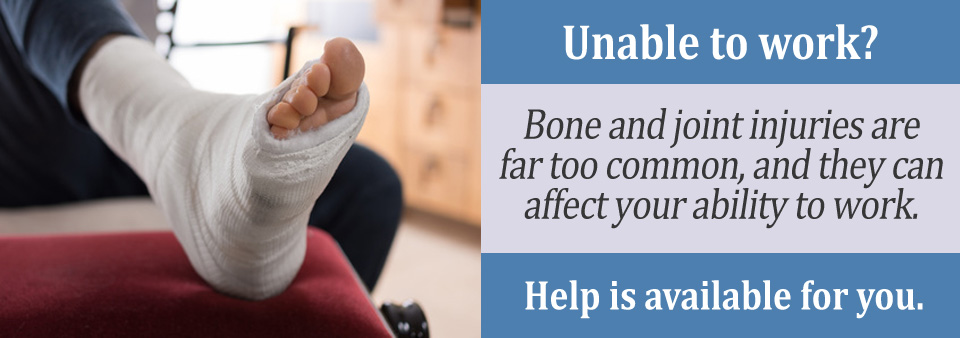According to the United States Bone and Joint Initiative (USBJI), musculoskeletal conditions, including bone and joint injuries, affect more than 54 percent of working-age adults in the U.S.
Injuries and chronic conditions, like arthritis, tendonitis, and connective tissue disorders, are among the most common causes of disability in the U.S., and under certain circumstances, can qualify for disability benefits.
Causes of Bone and Joint Injuries
Injuries to the bones or joints can happen for all kinds of reasons. Accidents, like car crashes or on-the-job incidents, account for some. Others are caused by underlying serious medical conditions, like inflammatory arthritis or tendonitis.
The likelihood of injury increases with age as well, since wear and tear on the body can cause cumulative effects, particularly if you typically work in a physically strenuous job.
Work-Related Accidents and Disability Benefits
If a bone or joint injury happens at work, then Workers’ Compensation is your first avenue for financial support while you’re recovering. Employer sponsored short- or long-term disability may give you additional coverage.
If your injury requires a longer recovery period or causes permanent impairments, then you can apply for disability from the Social Security Administration (SSA).
SSA Disability and Bone and Joint Injuries
Regardless of what caused the injury in the first place, if you’re unable to return to work within just a few months, then disability through the SSA may be an option for you. To qualify for Social Security Disability, you must have a severe medical condition that has or will stop you from working for at least 12 months.

Most people who receive benefits get approved because their medical records show they meet a standard disability listing. Here are a few of the listings related to bone and joint injuries:
- Major dysfunction of a joint
- Reconstructive surgery of a major, weight-bearing joint
- Fracture of the pelvis, a leg bone, or one of more bones of the feet
- A major fracture of one of the bones in your arm
Your doctor can help you understand the SSA’s medical evidence requirements and whether you may qualify under one of these disability listings.
Disability Approval Without Meeting a Listed Condition
Some disability applicants get approved without meeting a listing for a specific medical condition. They instead show the SSA they have severe limitations in their functional capacity. This is achieved through what’s known as an RFC or residual functional capacity evaluation.
An RFC takes into account all of your medical conditions and limitations and may give the SSA the justification necessary to grant you benefits, even if you don’t meet a disability listing.
Getting Help with Your Claim and Applying for Benefits
A disability application can be made online or at the local SSA office. No matter how you decide to apply, you may want to consider seeking legal assistance prior to starting your claim for benefits.
A disability advocate or attorney can help you understand the qualification and application procedures and can even assist in gathering the evidence necessary to prove eligibility.